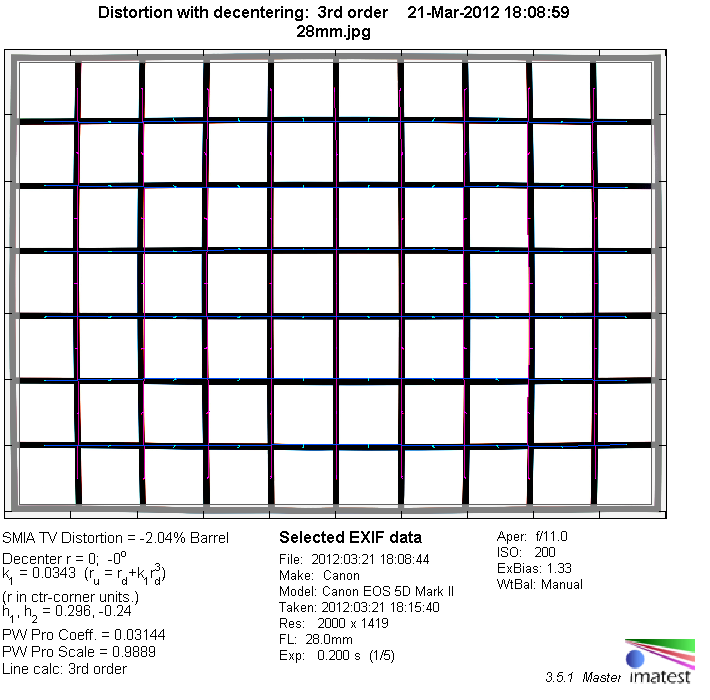|
Canon EF 28mm f/1.8 USM - Full Format Review / Test - Analysis |
|
Lens Reviews -
Canon EOS (Full Format)
|
|
Page 2 of 3

Distortion
The lens shows a moderate degree of barrel distortion (~2%). This may be visible at times but this isn't overly disturbing yet.

Vignetting
Like most large aperture lenses it struggles a bit with respect to its vignetting characteristic on full format cameras. At max. aperture there is a very heavy light falloff indeed - although we've also seen worse than that. Stopping down improves the issue, of course, but you should at least choose f/2.8 if you want to tame the falloff to an acceptable degree.

MTF (resolution)
Given the APS-C results we were already prepared to face the worst but we were actually pleasantly surprised - to some degree at least. This does not apply to f/1.8 and f/2.2 though. The center performance is very good here but the border and corner quality is basically non-existent at f/1.8 and not much better at f/2.2. There is a substantial boost in quality at f/2.8 though. The center is easily excellent here and the borders reach already good levels. However, the corners remain somewhat disappointing. The sweet spot of the lens is reached between f/4 and f/8 where even the corners reach a good to very good (just) image quality.
f/11 remains easily usable although diffraction has a limiting effect here already.
You may be surprised that the peak performance in the outer image regions is actually "higher" than the APS-C results suggest but remember that you got a much higher pixel density on the smaller format and the lens does simply recover a bit towards the corners.
Field curvature is somewhat pronounced on this Canon lens. There's also a bit of a focus shift when stopping down (so-called residual spherical aberrations).
The centering quality of the tested sample was fine.
Please note that the MTF results are not directly comparable across the different systems!
Below is a simplified summary of the formal findings. The chart shows line widths per picture height (LW/PH) which can be taken as a measure for sharpness.
If you want to know more about the MTF50 figures you may check out the corresponding Imatest Explanations
Chromatic Aberrations (CAs)
CAs (visible as color shadows at harsh contrast transitions) can reach an average CA pixel width of up to 1.5 pixels at the image borders - this is acceptable in the full format scope. Fortunately the CAs don't seem to increase that much anymore from the mid image field (the lateral CAs were very high in our APS-C format test).

|